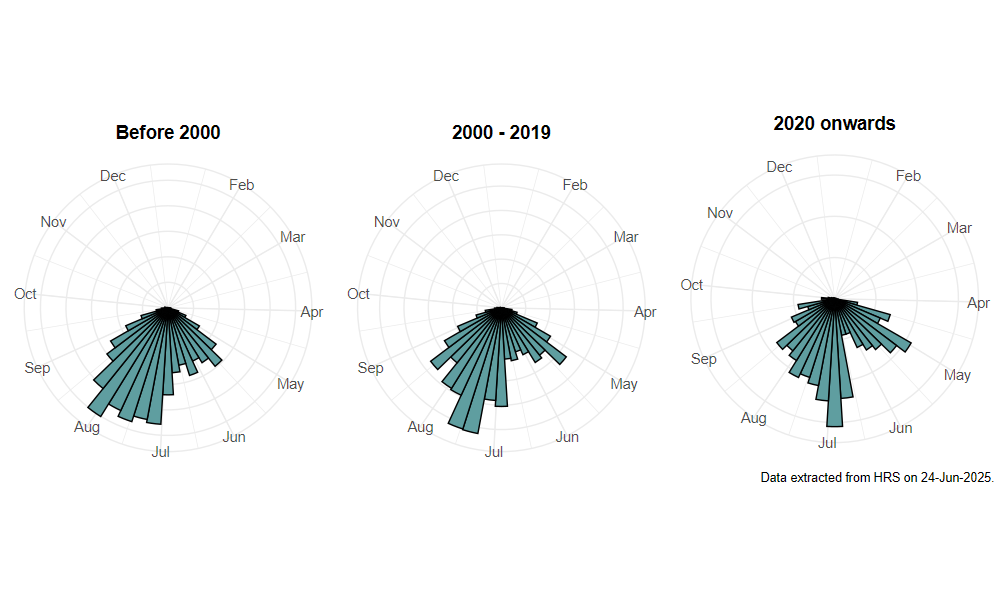Platycheirus clypeatus (Meigen, 1822)
Identification
Identification difficulty = 3. ![]()
![]() according to Ball & Morris, 20241
according to Ball & Morris, 20241
Synonymy
Speight & Goeldlin (1990)2 and Goeldlin et al. (1990)3 split Platycheirus clypeatus into a complex of species, separating off P. europaeus, P. occultus and P. ramsarensis. Records of P. clypeatus that predate this split may relate to any of these species unless a specimen is available for redetermination.
Biology
The early stages of this common species require further investigation. The larva is rarely found at aphid colonies, and may be a generalised predator within the litter layer. It is found in all sorts of grassy situations, but most abundantly in damp grassland including pond, stream and ditch margins. Adults fly low down amongst tall vegetation and are easily found by sweeping. They also visit a wide range of flowers including sedges and grasses.
Flight period
The following plots show the number of unique records per week excluding those reported to be of immature stages.

Distribution
Of the segregates from the P. clypeatus complex, this remains by far the commonest and most widespread, occurring throughout Britain although it has shown a marked decline in the frequency with which it is recorded over the last few decades.

Trends
The following plots show the Frescalo TFactor vs year and a map of the rescaled frequency (all records) for the species.
-
Ball, S., & Morris, R. (2024). Hoverflies of Britain and Ireland. WILDGuides (3rd ed.). Oxford: Princeton University Press. ↩
-
Speight, M., & Goeldlin de Tiefanau, P. (1990). Keys to distinguish Platycheirus angustipes, P. europaeus, P. occultus and P. ramsarensis (Dipt., Syrphidae) from other clypeatus group species known in Europe. Dipterists Digest (first series), 5, 5–18. ↩
-
Goeldlin de Tiefanau, ., Maibach, A., & Speight, M. (1990). Sur quelques espèces de Platycheirus (Diptera, Syrphidae) nouvelles ou méconnues. Dipterists Digest (first series), 5, 19–43. ↩